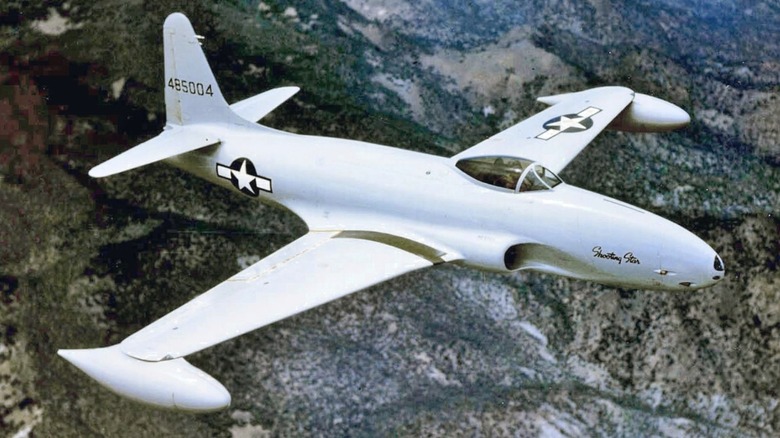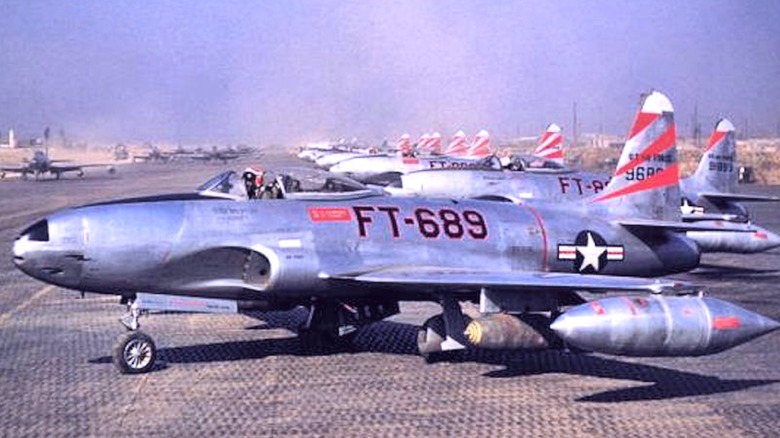How Effective Was America's First Fighter Jet In Air-To-Air Combat?
World War II significantly influenced the development of numerous technologies, and one of the most notable was the turbojet-powered aircraft. The Nazis beat the United States to fielding the world's first jet fighter, the Messerschmitt Me 262, but it didn't take long for the United States to catch up. It did so with the P-80 Shooting Star, America's first plane to break 500 mph in level flight. It was also the first jet manufactured in large quantities for the newly formed U.S. Air Force.
While P-80s saw limited testing in Europe toward the end of the conflict, it was the Korean War where the Shooting Star made a name for itself as one of the most advanced planes in the conflict. The aircraft was initially intended as a high-altitude interceptor but was instead used for a variety of purposes, including photo reconnaissance, use as a day fighter, and as a fighter-bomber. The P-80 holds the distinction of being the victor in the world's first all-jet fighter combat, having downed a Russian-built MiG-15 on November 8, 1950.
Despite being used outside of its intended purpose, the P-80 was initially successful in air-to-air combat, especially in Operation MiG Alley. Multiple factors helped the plane accomplish this, including a maximum speed of 580 mph (compared to the MiG-15's 670 mph), a ceiling of 46,800 feet, a range of 1,090 miles, and it was equipped with a variety of ordnance that made it more than capable of meeting any enemy jet in combat.
The P-80 started out strong but met fierce resistance in Korea
While the P-80 scored the first air-to-air kill in an all-jet conflict, it suffered extensive losses throughout the Korean War. Around 75% of enemy losses at the beginning of the war were attributed to P-80s, but the trend wouldn't continue for very long. Throughout the conflict, the U.S. lost 368 P-80s (Then designated F-80), amounting to around 30% of the total force. As the conflict continued, more were lost to enemy action, but plenty succumbed to non-combat accidents.
277 P-80s were shot down in combat missions, though the vast majority succumbed to ground fire, not air-to-air kills. Only 14 were confirmed to be shot down by enemy airplanes, while the remaining losses were the result of unspecified causes. These figures suggest that the P-80 was a relatively decent dogfighter, but had several limitations when it came to avoiding flak and other ground fire aimed at it during flight.
The P-80 was instrumental in transitioning the U.S. from propeller-driven aircraft to those featuring turbojets, and many of the lessons learned from the aircraft aided in the development of those that followed. Notably, the advent of the more advanced F-86 Sabre, which ruled the skies during the Korean War, outclassed the P-80 in every measurable way and took center stage during the conflict. This resulted in the reduced usage of P-80s when a more powerful and reliable jet was sitting around waiting to fly the unfriendly skies.

